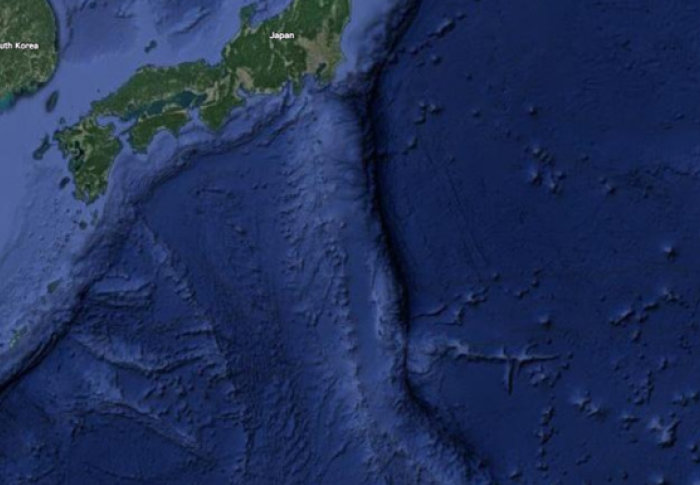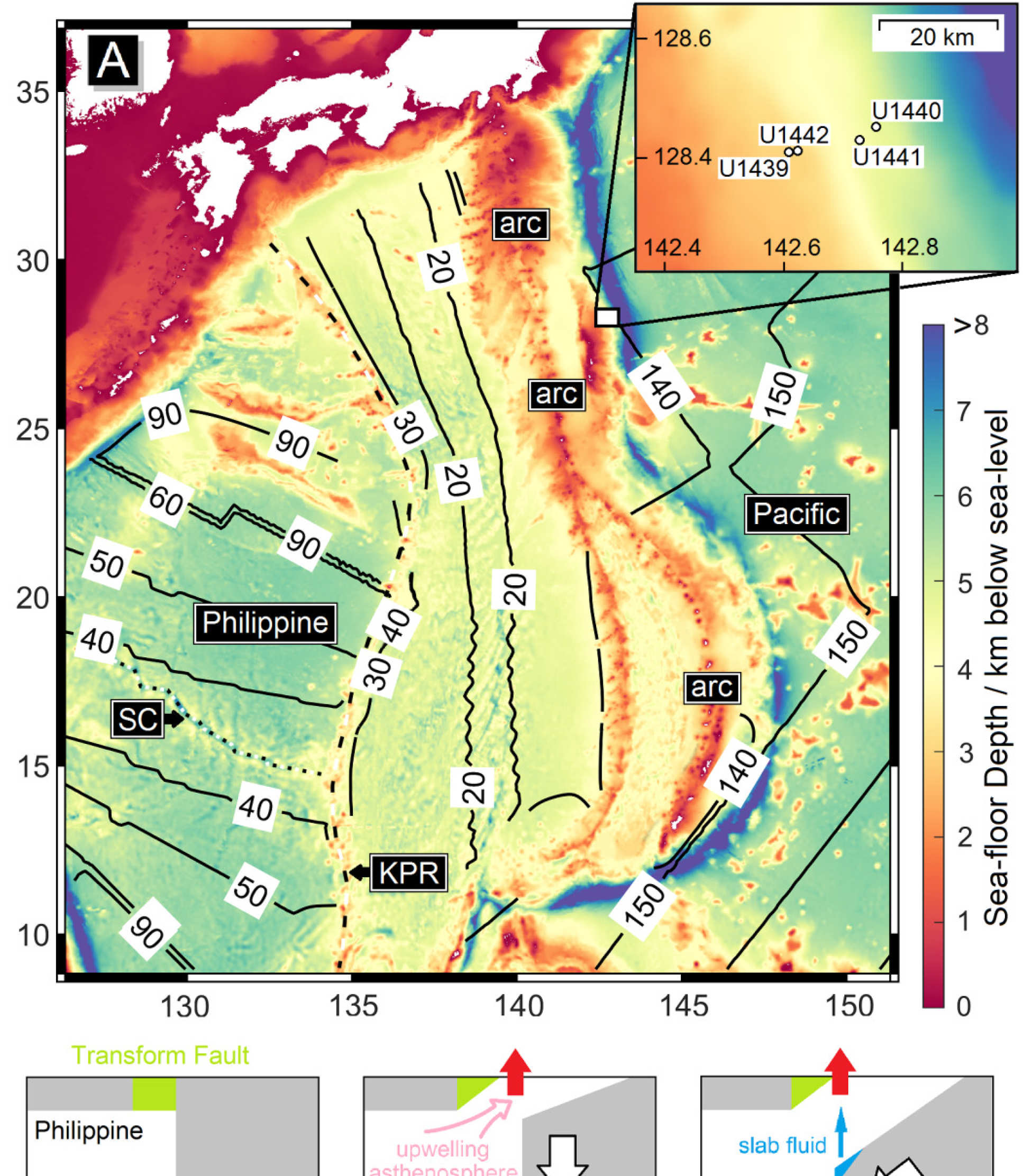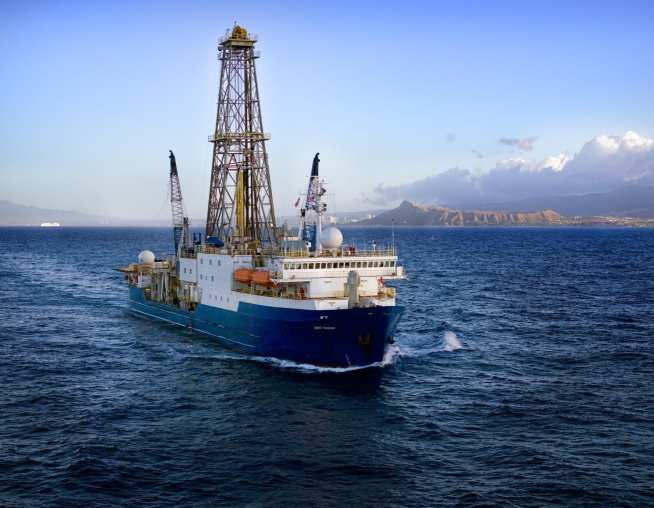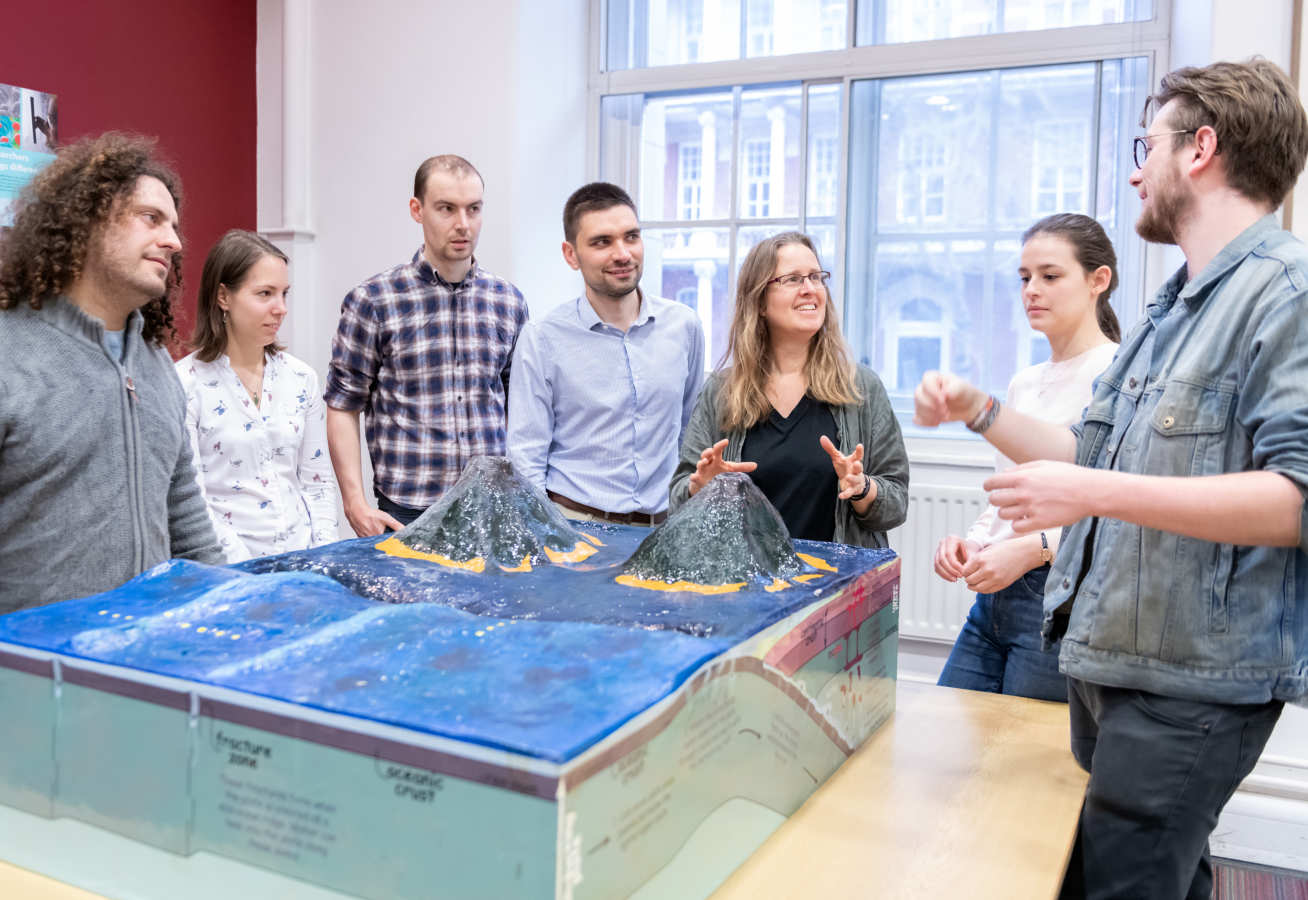A step forward in understanding the start of subduction

Location of the Izu-Bonin-Mariana Subduction zone, where the Pacific Plate sinks beneath the Philippine Sea plate. Source: Google Maps
Researchers have made a big leap forward in understanding what happens at the very start of the process of subduction.
Scientists are still trying to understand how subduction begins. Subduction, when one tectonic plate slides under another, is a key process - without subduction initiation, plate tectonics cannot start. There are no clear examples of subduction initiation events on Earth at the present, and so scientists have to rely on indirect methods, such as analysing the rock record and performing computer simulations, in order to better understand this process.
The Imperial researchers and colleagues used analysis of a drilled core of rock recovered from the Izu-Bonin-Mariana subduction system – where the Philippine Sea and Pacific plates are slowly converging and are responsible for the formation of the Mariana trench, the deepest point on Earth.


The rock samples were collected by the International Ocean Discovery Program Expedition 352, a few hundred kilometres south of Japan in the Pacific Ocean.
Analysis of the chemistry and age of the rocks suggested the process of subduction initiation occurred (geologically) rapidly, in less than one million years over an about 1000 km long plate boundary, which is surprising – normally subduction occurs at about the same rate that your fingernails grow, i.e. motions of about 1 km per million years. Such a huge and rapid initiation event would likely have been cataclysmic, and would have had significant effects on a global scale.
Can you model that?
To understand this historic event, researchers built a state-of-the-art simulation (using computer code developed by the Applied Modelling and Computation Group in the Department of Earth Science and Engineering) to test whether such a speedy start to subduction would be possible.
The research, published in Nature Communications, shows that the cold and dense Pacific Plate did indeed start to sink beneath the hotter and lighter Philippine Sea plate in a rapid event 50 million years ago. As further proof, the simulation of this rapid subduction initiation event generated lava of the same chemical composition, in the same order, and in the same location as we see in the Izu-Bonin-Mariana rock record.
An animation of the simulation in progress. It is a 2D slice through the subduction zone from West to East. You can clearly see the Pacific plate begin sinking beneath the Philippine Sea plate. If you observe the time in the title you can see that the whole process takes around 600,000 years. This is an exact match with the timescale estimated from the analysis of the drilled rock. The magma produced is indicated by the graph above the simulation and again, matches the rock record precisely.
The researchers’ simulations actually only produce certain types of lava when subduction starts rapidly like this. So, the presence of these unique rocks, as found at the Izu-Bonin-Mariana zone, could effectively be used as a “smoking gun” for this type of cataclysmic event.
Lead author Dr Benjamin Maunder says, “We have not only been able to show that this surprising story is indeed likely what occurred in the Pacific, but that the type of rocks found here can only be produced in this way. This means that these rocks can be used as an indicator for this type of catastrophic event in rock records around the globe.”
For example, such rock sequences have been found in the Alpine-Himalaya belt where subduction occurred in an old ocean that used to separate India and Africa from the rest of Eurasia.
Moving on up
As well as reproducing the rapid speed of the initiation of the Izu-Bonin-Mariana subduction zone, the model demonstrates that the whole process could not have been driven by horizontal external forces as previously thought. Instead, it is the vertical forces, produced by density differences between the Pacific and Philippine Sea plates themselves that cause subduction to start.
The researchers' model could also initiate subduction by far-field horizontal forces, but this was neither fast nor produced the right sequence of magmatic rocks for the Izu-Bonin-Mariana subduction zone.Such initiation may be happening today at the southern tip of New Zealand.
The start of something new

Dating the age of other similar rock sequences around the world, and producing different simulations designed to test other aspects of this process might add more strength to this theory or encourage researchers to rethink parts of it.
Professor Saskia Goes, a co-author on this work, says, “It’s an exciting step in learning about an important Earth process that we are only just starting to understand.”
Article text (excluding photos or graphics) © Imperial College London.
Photos and graphics subject to third party copyright used with permission or © Imperial College London.
Reporter
Victoria Murphy
Institute of Global Health Innovation